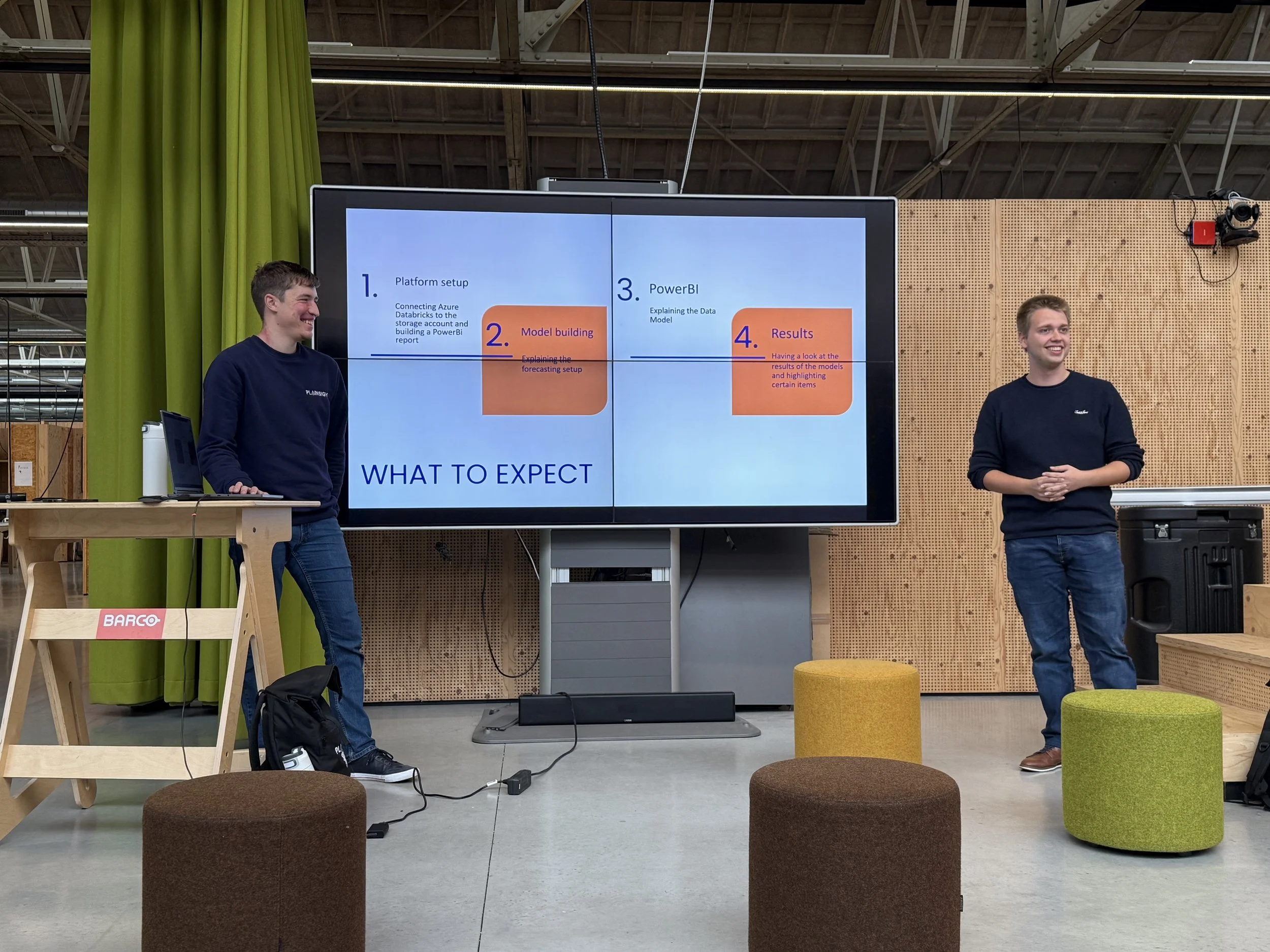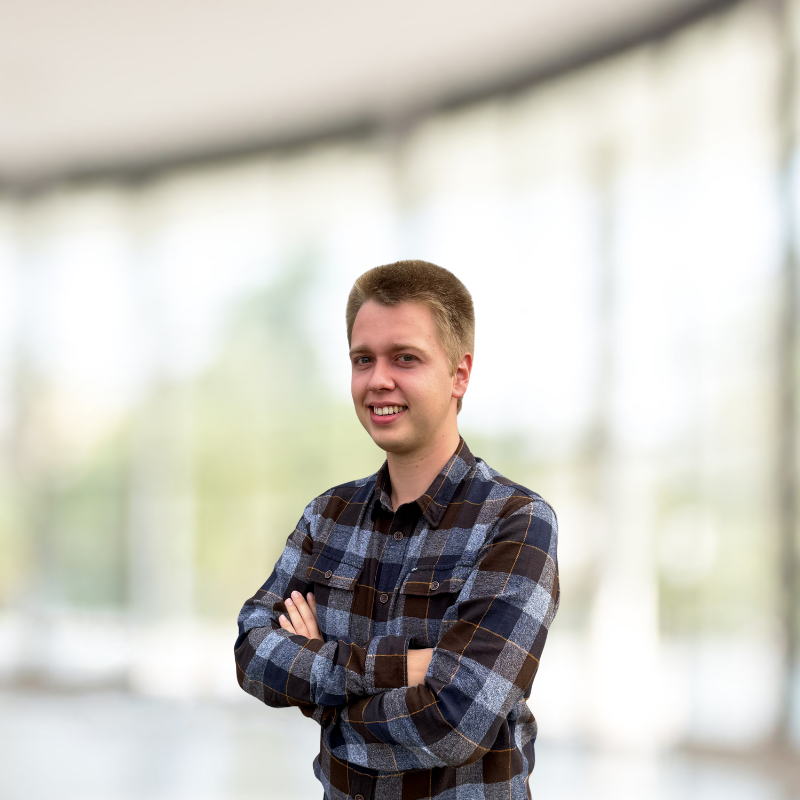From Campus to Client: Building data-analyst skills at Plainsight Academy
Introduction
As two freshly graduated business engineers stepping into the world of data consulting, we joined the Plainsight Academy. Eager to bridge the gap between academic theory and real-world application. Over the course of five intensive weeks, we learned how to turn data into insights using tools like Databricks, Microsoft Fabric and Power BI. What started as a training program quickly became a hands-on journey into the world of analytics, collaboration and client impact.
Curious to see how Plainsight helped us grow from students into data-driven consultants?
In this blog, we share our experience and the key takeaways from our time in the Plainsight Academy.
Our time at the academy
During the Academy, we explored the entire data lifecycle. From ingesting raw data and transforming it, to analyzing and visualizing insights in interactive dashboards. It was fascinating to see how each stage connects and contributes to building a complete data product.
Alongside the technical training, we also focused on how to work effectively as a development team. We learned how to plan and coordinate our work, collaborate on shared code and communicate clearly to keep the project moving forward. We also participated in several soft-skill trainings, which helped us become more effective and confident in our roles as consultants.
In the next sections, we take a closer look at the different trainings.
Data modelling, SQL and DBT
In our role as data consultants, we need to ingest data from various sources and transform it into a structure that supports analysis and reporting. Through our training, we learned how data modelling, SQL, and DBT work together to make that process efficient and reliable.
The data modelling training taught us how to design an optimal data representation that is both understandable to business stakeholders and consistent across the project. SQL allowed us to query, clean, and transform the data in preparation for downstream processing and reporting. With DBT, we organized these SQL transformations into reusable, version-controlled models with integrated testing and documentation.
With the insights gained in these trainings, we were able to start learning how to use these tools within larger data platforms and end-to-end solutions that extend beyond SQL.
CICD, Azure and GenAI
As we continued developing our skills, we learned how continuous integration and continuous delivery (CI/CD), Azure services, and Generative AI fit into the modern data landscape. Implementing CI/CD in our data projects allows us to automate testing, version control, and deployment of code and pipelines — ensuring that every change is reliable and traceable.
Within the Azure ecosystem, we explored how its broad set of services supports the entire data lifecycle. We learned how to organize, manage, and monitor Azure resources across projects by tracking usage and costs, applying governance policies, and maintaining visibility over infrastructure spending. These are essential aspects of running scalable and efficient cloud solutions.
Building on this foundation, we focused on developing Generative AI solutions, particularly intelligent chatbots that interact with enterprise data through natural language. Using Azure AI Foundry, we learned how to design, build and deploy these chatbots by connecting large language models to secure company data sources. This enabled us to build assistants capable of answering questions, summarizing information and automating routine tasks, demonstrating how AI can enhance productivity and accessibility across the business.
Together, these technologies help us build smarter, more efficient, and scalable data solutions that evolve with the needs of the business.
Graduation: Demonstrating Our Workation Project
The Academy concluded with a “workation” in Kuurne, where we stayed together in a house that provided the perfect setting to combine focused work with a relaxed atmosphere. Over several days, we applied everything we had learned to a customer use case and prepared our final presentation.
This hands-on project allowed us to demonstrate our skills, collaborate closely as a team, and receive valuable feedback from colleagues. The final day was especially rewarding: we presented our solution and celebrated the successful completion of the Academy together.
Stepping Into the Community: DataMinds Connect 2025
As a final highlight of the Academy, we had the opportunity to attend DataMinds Connect. a Three-day event bringing together data professionals and enthusiasts from around the world. It was a great way to step into the wider data community and apply our newfound knowledge in a real-world context.
The event allowed us to explore diverse topics and learn from professionals with a great deal of experience and insight. It reinforced our understanding and inspired new ideas for future projects.
to conclude
The Plainsight Academy has truly been the kickstart of our careers in data. a Place where curiosity became capability and theory became hands-on experience. It gave us not only the technical skills to work confidently with modern data tools, but also the mindset to approach every project with curiosity, collaboration, and a focus on delivering value. We learned how different technologies fit together to solve real business problems.
As we move forward, we are excited to apply what we have learned, continue exploring new technologies, and contribute to building data solutions that make a real difference.
Ready to Grow Your Career in Data? Join Us at Plainsight!
At Plainsight, learning never stops and neither does our drive to grow together. Whether you are a recent graduate, an experienced professional or a student looking for an internship, Plainsight offers opportunities to gain real experience, share knowledge and make an impact in data analytics.
Meet us at upcoming career events or connect to us online and start your journey with us.




